Annapurna Circuit Trekking is the most important and most famous trekking route in the Annapurna region. Overall, the Annapurna Circuit is considered to be the classic trek in Nepal to experience the vast biodiversity and cultural heritage Nepal is renowned for.
We will commence our trek with an overland journey to Beshi Sahar, 130 km West of Kathmandu where we overnight. Our trek follows the gorge of Marshyangdi river through lush paddy fields, innumerable tiny streams, waterfalls and beautiful villages, eventually emerging into high desert country from Manang (3597m). The trek gains in height fairly gently reducing the chances of altitude sickness. However, we spend a day acclimatising before crossing the Thorong-La (5416m). From a high lodge camp we are up early for our crossing of the Thorong- La (spoiler alert: tremendous high mountain feelings) before our decent to Muktinath. This place in the lower Mustang region is one of the holiest pilgrimage sites for Buddhist and Hindu people in Nepal.
We continue through the dry arid landscape to Kagbeni, a fascinating historical fortress town. The trail back follows the Kali Gandaki River to Jomsom beneath the shadow of immense Himalayan peaks and through the deepest canyon in the World. We descend to Tatopani before ascending to Ghorepani and Poon hill for some tremendous sunrise views of both the Dhaulagiri and Annapurna Himal. A further two days are spent trekking through beautiful Rhododendron bamboo and Oak forest before eventually reaching Nayapul for a short drive to the beautiful lakeside town of Pokhara.
Itinerary Outline:
01 Drive Kathmandu to Besisahar (760m) by local bus (approx. 6 hrs drive)
02 Besisahar to Bahundanda (1310m) – 5 hrs walk
03 Bahundanda to Chamje (1430m) – 6 hrs walk
04 Chamje to Dharapani (1860m) – 6 hrs walk
05 Dharapani to Chame (2670m) – 5 hrs walk
06 Chame to Pisang (3200m) – 6 hrs walk
07 Pisang to Manang (3540m) – 4 hrs walk
08 Rest day in Manang
09 Manang to Yak Kharka (4018m) – 5 hrs walk
10 Yak Kharka to Thorong Phedi (4450m) – 4 hrs walk
11 Thorong Phedi to Thorong Pass (5416m), descend to Muktinath (3800m) – 8 hrs walk
12 Muktinath to Kagbeni (2800m) – 3 hrs walk
13 Kagbeni via Jomsom (2710m) to Marpha (2670m) – 5 hrs walk
14 Marpha to Kalopani (2530m) – 6 hrs walk
15 Kalopani to Tatopani (1190m) – 6 hrs walk
16 Tatopani to Shikha (2830m) – 5 hrs walk
17 Shikha to Ghorepani (2750m) – 3 hrs walk
18 Ghorepani to Ghandruk (1940m) – 7 hrs walk
19 Ghandrunk to Pothana (1900m) – 5 hrs walk
20 End trek at Phedi (approx. 3 hrs walk), drive to Pokhara (approx. 30 min drive)
21 Drive back to Kathmandu
Drive Kathmandu to Besisahar (760m)
Besisahar to Bahundanda (1310m)
Walking time: 5 hours
Bahundanda to Chamje (1430m)
Walking time: 6 hours
Chamje to Dharapani (1860m)
Walking time: 6 hours
Dharapani to Chame (2670m)
Walking time: 5 hours
Chame to Pisang (3200m)
Walking time: 6 hours
Pisang to Manang (3540m)
Walking time: 4 hours
Rest day in Manang
Manang to Yak Kharka (4018m)
Walking time: 5 hours
Yak Kharka to Thorong Phedi (4450m)
Walking time: 4 hours
Thorong Phedi via Thorong Pass (5416m), descend to Muktinath (3800m)
Walking time: 8 hours
Muktinath to Kagbeni (2800m)
Walking time: 3 hours
Kagbeni via Jomsom (2710m) to Marpha (2670m)
Walking time: 5 hours
Marpha to Kalopani (2530m)
Walking time: 6 hours
Kalopani to Tatopani (1190m)
Walking time: 6 hours
Tatopani to Shikha (1935m)
Walking time: 5 hours
Shikha to Ghorepani (2750m)
Walking time: 3 hours
Sunrise at Poon Hill, then trek to Ghandruk (1940m)
The trail climbs south on path through deep forests. It finally emerges on a grassy knoll which offers good mountain views, including a view of Machhapuchhare (not visible from Ghorepani) and a panorama all the way south to the plains of India. It is a similar view to that from Poon Hill. We climb along the ridge in pine and rhododendron forests to a crest at 3030m, then descend to cross a second pass, at 2960m. The trail then descends steeply to a stream before the climbing again through the forest to Tadapani. The trail descends steeply from Tadapani through the forest to a clearing, a short steep descent among rocks leads to a stream crossing then we descend gently pass other streams and finally down towards Ghandruk. The trail reaches the edge of Ghandruk near the tin roofed handicraft factory, and then descends on stone steps into the maze of the village itself.
Walking time: 7 hours
Ghandrunk to Pothana (1900m)
Walking time: 5 hours
End trek at Phedi, drive to Pokhara
Walking time: 3 hours
Drive back to Kathmandu
About the Annapurna region
Annapurna Base Camp Trekking is one of the best trekking areas in the world, lying in the Annapurna conservation Area of Nepal. The word Annapurna is a Sanskrit name which literally means “full of food” but is normally translated as “Goddess of the Harvests”. The Annapurna region, is a majestic section of the Himalayas in Nepal.
The Annapurna Region was inscribed as a ‘Conservation Area’ in 1986. The protected region covers an area of 7600 sq. km. around two thirds of hikers visiting Nepal head to the Annapurna Region every year. In this region, there are easily available guest houses and hotels while on trek. Food is hygienic.
This region offers incredible diverse scenery, with high spectacular mountains and low land. The Annapurna route also offers the unique Gurung culture. Annapurna region trekking will show you the scenery of top mountains such like Dhaulagiri {8167m}, Manaslu {8156m}, Annapurna I {8091m}, Machhapuchhre {6996m}, Nilgiri {6940m},Tukche peak {6920m}, Annapurna South {7219m} & more.
Two main trails follow river valleys in relatively easy ascents: up the Kali Gandaki to Jomsom and Muktinath, and up the Marshyangdi to Manang. These trails can be joined by crossing a high pass, the Thorang La, and when combined they form the classic Annapurna Circuit. As the land climbs, mud-walled huts are replaced by flat-roofed stone houses, and the predominant occupation changes from farming to herding while the principle religion of the people changes from Hindu to Buddhist.
The Annapurna region dramatically reveals the cultural and geographic frontier running across Nepal. Mountain views are frequent and spectacular, and the various trekking routes offer different experiences – the trek around Annapurna leads you throughout the region, the Annapurna Sanctuary trek heads toward the heart of the Annapurna and the short trip to Poon Hill offers the best panoramic views in the region.
Package Details:
| DEPARTURE/RETURN LOCATION | Kathmandu | |||||||||
| JOIN GROUP | 1 before departure from Kathmandu. | |||||||||
| SERVICE INCLUDES |
|
|||||||||
| SERVICE DOES NOT INCLUDE |
|


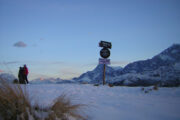
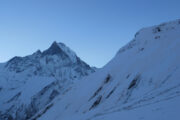
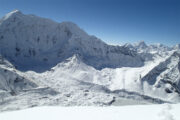
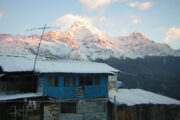
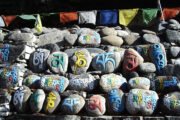
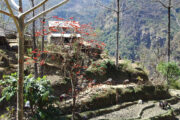
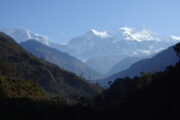
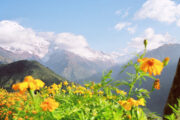
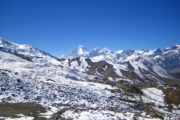
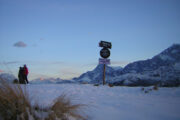
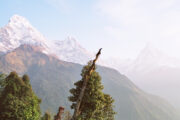
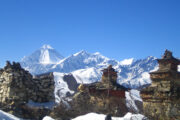
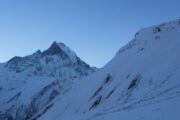
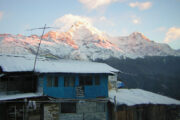
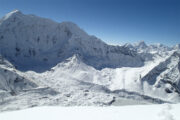
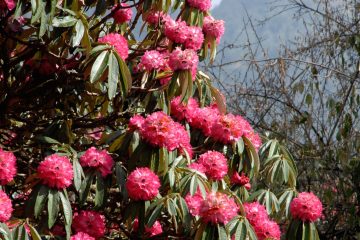
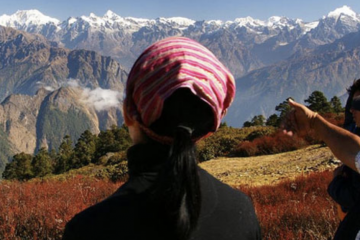
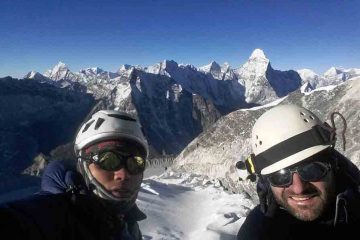
Tour Reviews
There are no reviews yet.
Leave a Review